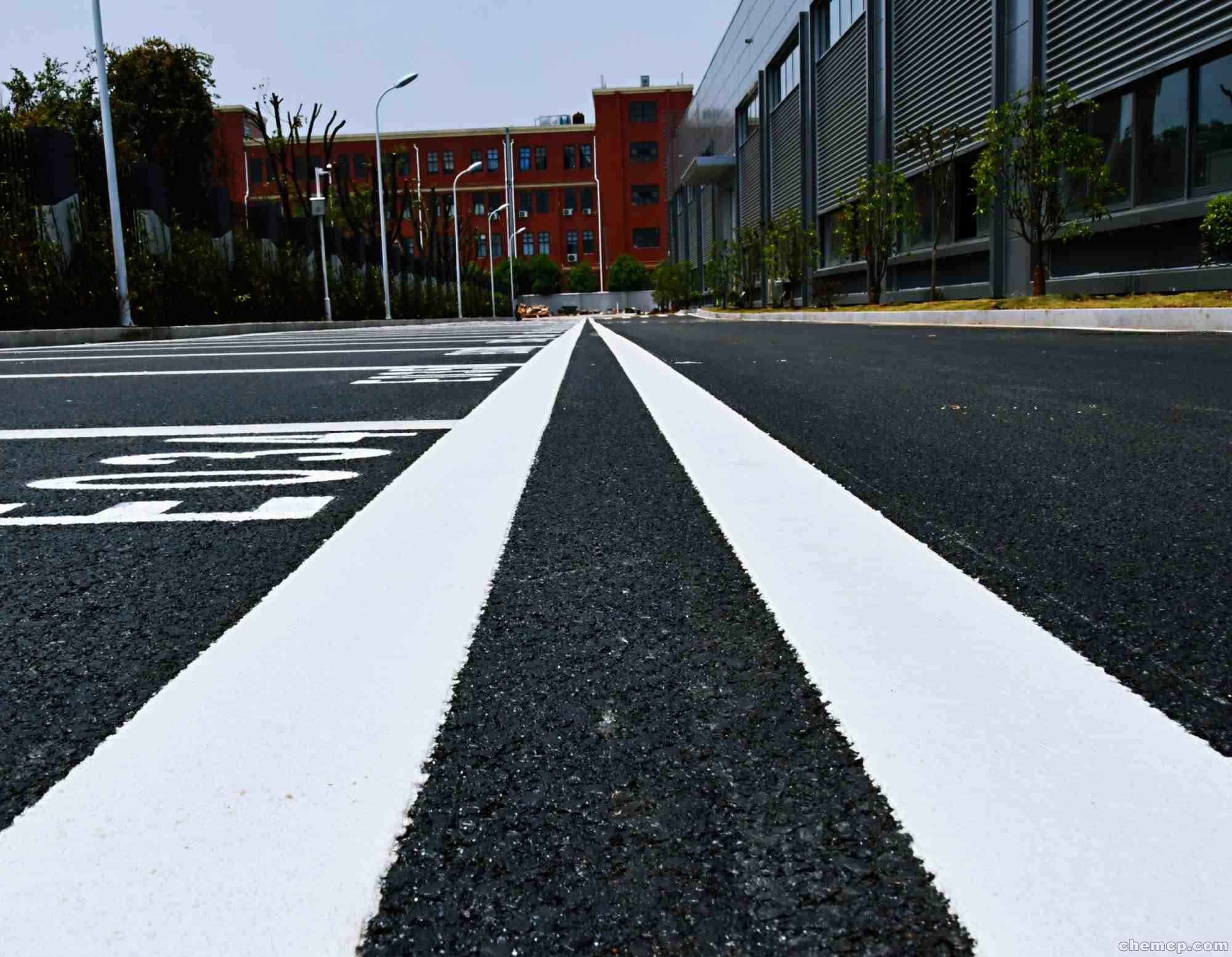Characteristics of Road Marking Paint

Quick-drying
After the reticle is coated with thermoplastic paint and spreads the glass beads, it should have a quick drying ability in a short time (less than 5min) regardless of the climate. General thermoplastic road reflective coatings have good quick-drying (hardening) properties, hardening quickly in cold seasons and slow hardening in warm seasons. The coating film cures quickly and will be skewed due to shrinkage, the surface flow is parallel, and the fixing quality of the glass beads is also poor. When the coating film cures slowly, not only the scattered glass beads sink into the coating, which reduces the reflective ability, but also delays the opening time and reduces the traffic capacity. This is usually done by lowering the temperature of the coating in the molten state to shorten the curing time.
Adhesion and adhesion mechanism
There must be strong adhesion between the marking film and the pavement, and it should not peel off and break. Good adhesion to the road surface, the coating film will not peel off quickly due to vehicle crushing, side slip and braking; It will not crack, flex and peel due to seasonal temperature changes, thermal expansion and contraction of the road surface. The thermoplastic road marking coating is heated to 180 ℃- 220℃ with a hot melt axe (the temperature is selected according to the type and formula of petroleum resin used in the coating), so that the thermoplastic resin in the coating is melted, and the coating is in a molten flow state, coated on the road surface with a special marking machine, while spreading glass beads, and curing at room temperature. When coated on cement pavement, the high-temperature molten coating and the cement pavement are mechanically toothed, so the adhesion is poor, and the road marking undercoating agent needs to be pre-coated to enhance the adhesion between the pavement and the coating.
Visual recognition
Whether it is day or night, the hot melt type reticle should be sharp, uniform, clear and have sufficient visual distance. Daytime visibility depends on the quality of the pigment, which is relatively easy to solve, the visibility at night, that is, reflectivity, first depends on the quality of the spreading of glass beads, glass beads should be spread evenly, appropriately, too much or too little will affect the reflective effect of the reticle. Secondly, the temperature control during the construction of the marking line is very critical, the temperature is too high, the fluidity of the coating will be stronger, that is, the dilution will be lower, and the penetration will become higher, the faster the glass beads settle, and even submerged into the molten coating, so the reflective effect will become worse; The temperature is too low, the glass beads are not firmly adhered, which can only ensure the immediate reflection effect after construction, and the long-term reflection effect is poor. Experience has shown that half of the diameter of the glass beads is buried in the coating film, and the reflection effect is the best. But it's not easy to do that. Therefore, glass beads are affected by the temperature, thickness, climatic conditions, etc. of the coating, so the spreading time should be strictly controlled during construction. Pay attention to the equipment for spreading the glass beads, as well as the influence of wind and direction (natural wind and wind caused by passing vehicles next to the line drawing car) on the spreading of glass beads, and avoid piles of glass beads. Too much spreading makes the day's tone worse, and produces unevenness, and it is easy to make dust sticky and reduce recognition. The particle size, roundness and quality of glass beads are also important factors affecting visual recognition.
Durability
(1) Abrasion resistance. The progress of the car is completely dependent on the friction between the wheels and the ground, and this friction has high requirements for the marking. China's road surface situation is more complicated, hard damage to the road, metal wheel walking, and road surface sand, muck all have high requirements for the wear resistance of the road marking.
For wear resistance, China's standard requires a weight reduction of ≤ of 50mg at 200 rpm/1kg, while the Japanese standard JLS requires: 100 rpm/1kg weight reduction ≤ 200mg. Of course, for wear resistance, as long as it can be recognized within the specified range and within the specified time period.
(2) Weather resistance. Thermoplastic coatings need to have excellent weather resistance. Combined with the climate diversity of China's vast territory, dry east and west, hot south and cold north and the characteristics of pavement, the ratio of raw materials of the coating can be adjusted to adapt to different climatic conditions, and can be used in different seasons. The durability should correspond to the expected value of the use time of the marking, such as the road marking is set to be coated once every 2 years, the best marking paint should reach about 2 years, most of the peeling, or after simple removal to achieve the pavement roadbed without traces, to avoid the old line affecting the guidance of the new marking line to the traffic flow, or consuming a lot of man-hours to remove.
The raw material composition of thermoplastic reflective road marking coating is as follows (formula):
Physical pigments and fillers: 47%—66%
Synthetic resin: 15%-20%
Glass beads: 15%—23%
Coloring pigment: 2%—10%
Plasticizers and other additives: 2%-5%
